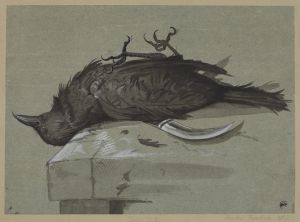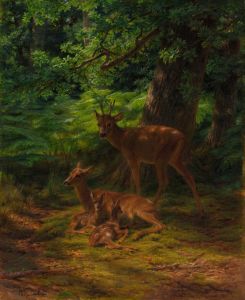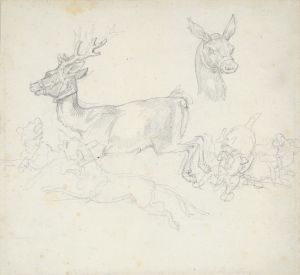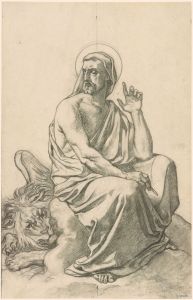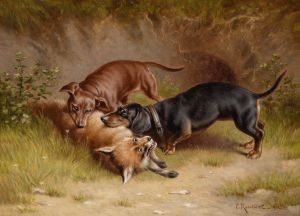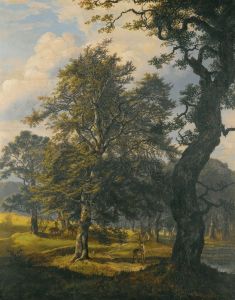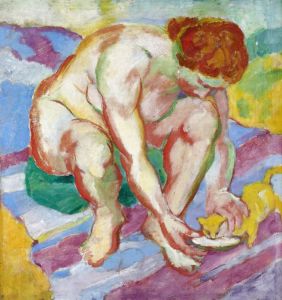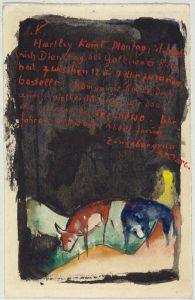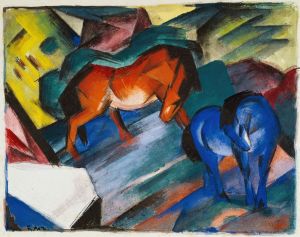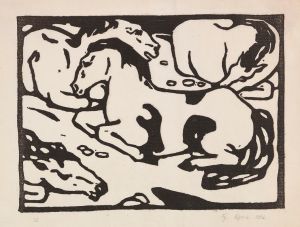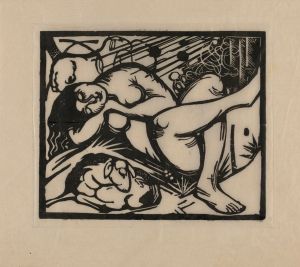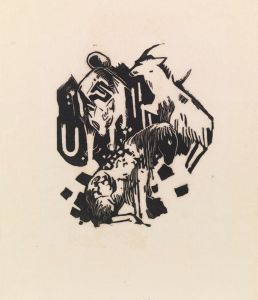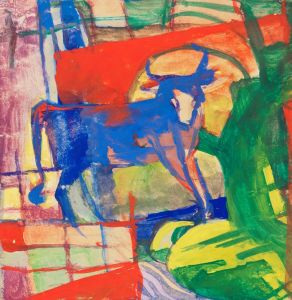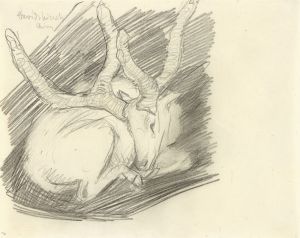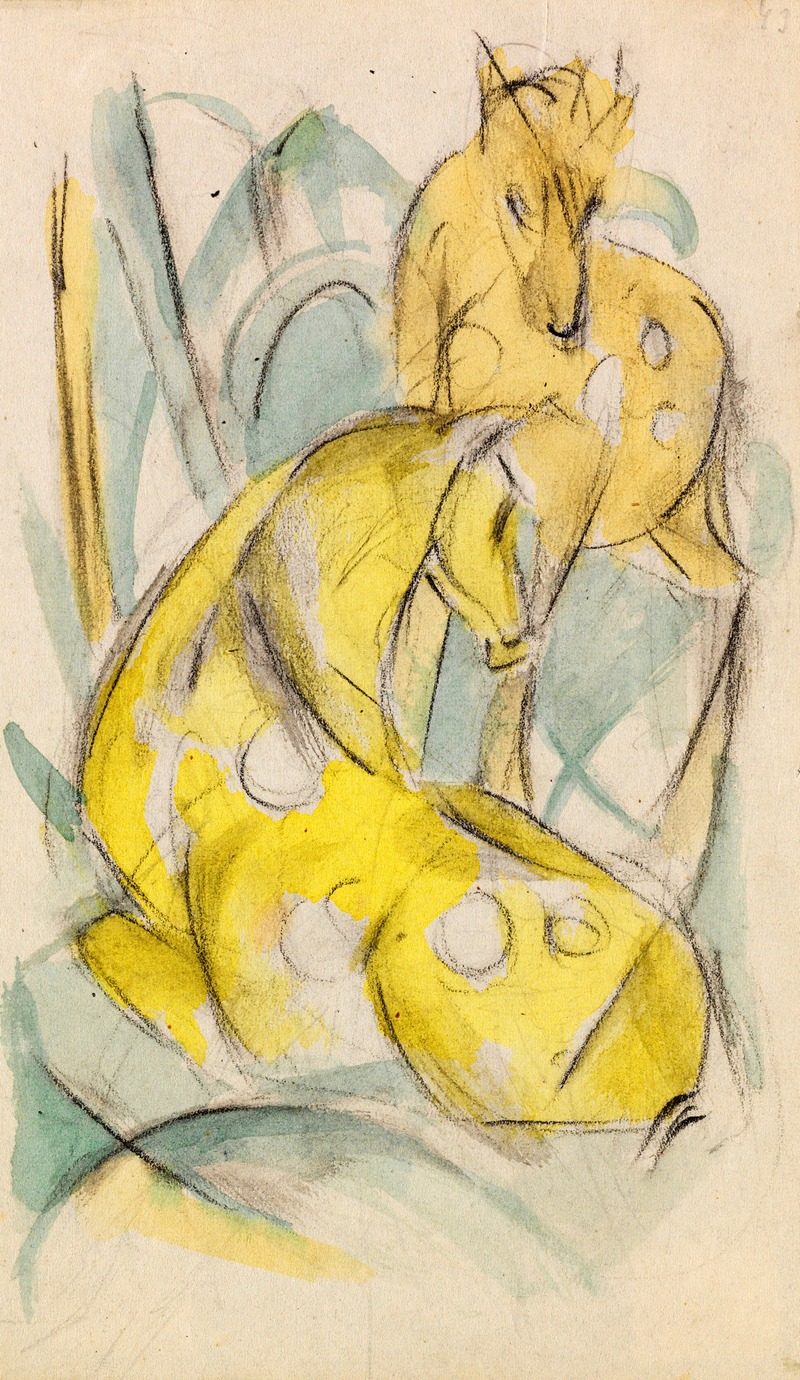
Zwei gelbe Tiere
A hand-painted replica of Franz Marc’s masterpiece Zwei gelbe Tiere, meticulously crafted by professional artists to capture the true essence of the original. Each piece is created with museum-quality canvas and rare mineral pigments, carefully painted by experienced artists with delicate brushstrokes and rich, layered colors to perfectly recreate the texture of the original artwork. Unlike machine-printed reproductions, this hand-painted version brings the painting to life, infused with the artist’s emotions and skill in every stroke. Whether for personal collection or home decoration, it instantly elevates the artistic atmosphere of any space.
Franz Marc was a German painter and printmaker, and one of the key figures of the German Expressionist movement. He was a founding member of Der Blaue Reiter (The Blue Rider), a group of artists that sought to express spiritual truths through their art. Marc is best known for his depictions of animals, which he believed to possess a spiritual harmony that was often lacking in humans. His works are characterized by bright colors and bold forms, which convey a sense of emotional intensity and a deep connection to nature.
"Zwei gelbe Tiere" (Two Yellow Animals) is one of Franz Marc's notable paintings, created in 1912. This painting exemplifies Marc's unique approach to color and form, as well as his interest in the symbolic representation of animals. In "Zwei gelbe Tiere," Marc uses vibrant yellows to depict the animals, a color choice that reflects his belief in the spiritual and emotional significance of color. For Marc, yellow was often associated with joy, energy, and the divine.
The painting features two stylized animals, which are often interpreted as deer or horses, set against an abstracted landscape. The animals are rendered in a simplified, almost geometric style, which was characteristic of Marc's work during this period. This abstraction allows the viewer to focus on the emotional and symbolic aspects of the painting, rather than on realistic details. The use of bold outlines and flat areas of color further enhances the sense of harmony and balance in the composition.
Marc's interest in animals was not merely aesthetic; he saw them as symbols of purity and innocence, in contrast to the chaos and corruption he perceived in human society. This perspective was influenced by his philosophical and spiritual beliefs, as well as by the broader cultural context of early 20th-century Europe, which was marked by rapid industrialization and social change. Through his art, Marc sought to convey a vision of a more harmonious and spiritually fulfilling world.
"Zwei gelbe Tiere" reflects Marc's engagement with the ideas of the Der Blaue Reiter group, which emphasized the importance of color and form in expressing spiritual truths. The group's members, including Wassily Kandinsky and August Macke, were interested in exploring new ways of seeing and representing the world, and they drew inspiration from a wide range of sources, including folk art, non-Western art, and the natural world.
Franz Marc's work, including "Zwei gelbe Tiere," had a significant impact on the development of modern art, particularly in Germany. His innovative use of color and form influenced subsequent generations of artists, and his paintings continue to be celebrated for their emotional depth and visionary quality. Tragically, Marc's life and career were cut short when he was killed in action during World War I in 1916. Despite his relatively short career, Marc's legacy endures, and his works remain an important part of the canon of modern art.
Today, "Zwei gelbe Tiere" is held in high regard by art historians and is considered an important example of Marc's mature style. It is housed in various collections and continues to be studied and appreciated for its artistic and historical significance.





